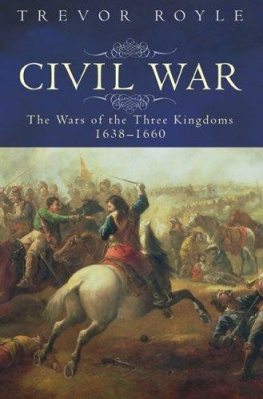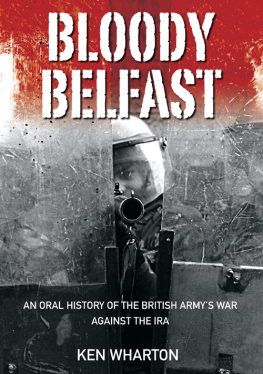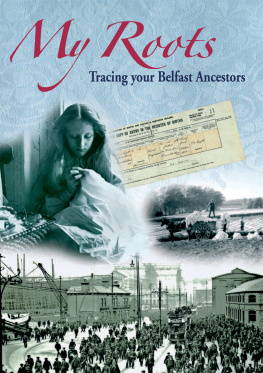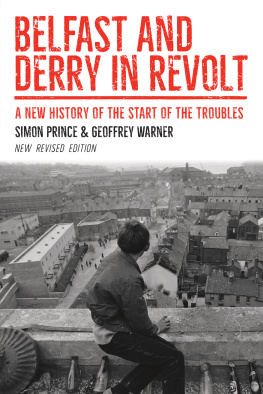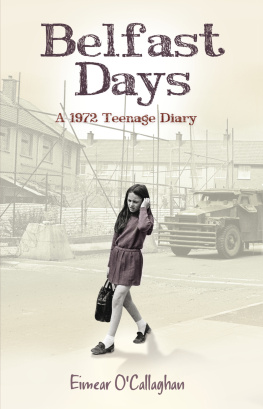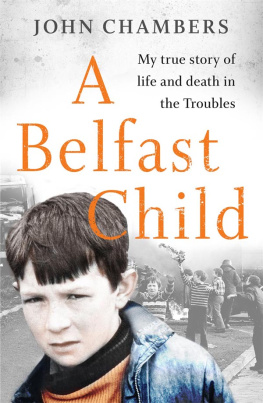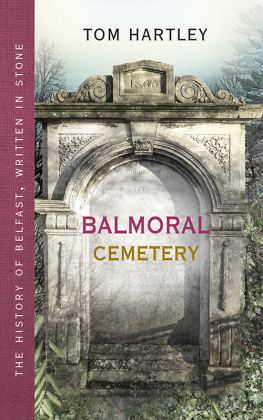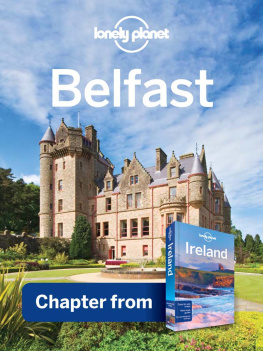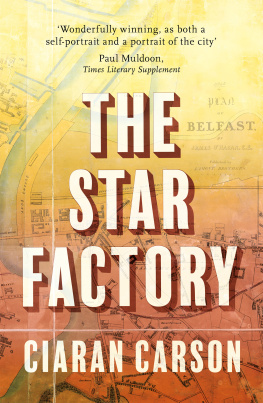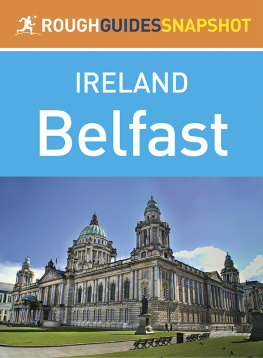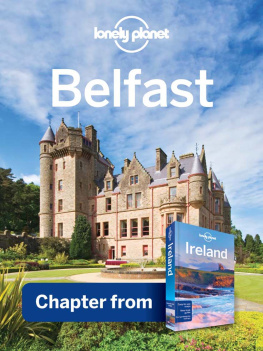
Stephen A. Royle studied geography at St Johns College, Cambridge and then took a PhD at the University of Leicester. He moved to Belfast in 1976 to a lectureship in geography at Queens University, where he is now professor of island geography. His books include North America: a geographical mosaic (edited with Frederick W. Boal, 1999); A geography of islands: small island insularity (2001); Enduring city: Belfast in the twentieth century (edited with Frederick W. Boal, 2006); The companys island: St Helena, company colonies and the colonial endeavour (2007); Doing development differently: regional development on the Atlantic periphery (edited with Susan Hodgett and David Johnson, 2007) and Company, crown and colony: the Hudsons Bay Company and territorial endeavour in western Canada (2011). Stephen Royle is treasurer of the International Small Island Studies Association, deputy editor of Island Studies Journal, chair of the Northern Ireland region of the Royal Geographical Society and former president of the Ulster Society for Irish Historical Studies, the Geographical Society of Ireland and the Belfast branch of the Geographical Association. He is a Member of the Royal Irish Academy.
PORTRAIT OF AN
INDUSTRIAL CITY
Clanging Belfast, 17501914
STEPHEN A. ROYLE

THE BELFAST NATURAL HISTORY
AND PHILOSOPHICAL SOCIETY
IN ASSOCIATION WITH
ULSTER HISTORICAL FOUNDATION
THE BELFAST NATURAL HISTORY AND PHILOSOPHICAL SOCIETY,
founded in 1821, encourages understanding of the human and natural
environment of Ireland, both past and present. It has a particular focus on
Belfast and its hinterland. It promotes original scholarship, and new ideas
and interpretations, which are of an academic standard and yet are accessible
to a wider audience.
First published 2011
by the Belfast Natural History and Philosophical Society
www.belfastsociety.com
in association with Ulster Historical Foundation
49 Malone Road, Belfast, BT9 6RY
www.booksireland.org.uk
Distributed by Ulster Historical Foundation
Except as otherwise permitted under the Copyright, Designs
and Patents Act 1988, this publication may only be
reproduced, stored or transmitted in any form or by any
means with the prior permission in writing of the publisher
or, in the case of reprographic reproduction, in accordance
with the terms of a licence issued by The Copyright
Licensing Agency. Enquiries concerning reproduction outside
those terms should be sent to the publisher.
Stephen A. Royle
ISBN: 978-1-908448-06-4
ePub ISBN: 978-1-908448-14-9
Mobi ISBN: 978-1-908448-13-2
Front cover: HOYFM.HW.H1915
Hand-riveters at work near Britannic bow, 25 May 1913
National Museums Northern Ireland
Collection Harland & Wolff, Ulster Folk & Transport Museum
Printed manufacture by Jellyfish Print Solutions
Design by Cheah Design
CONTENTS
LIST OF ILLUSTRATIONS
LIST OF TABLES
NOTES
The following abbreviations have been used in the notes:
| BCM | Belfast Corporation minutes |
| BL | British Library |
| BNL | Belfast News Letter |
| LHL | Linen Hall Library |
| LMA | Linen Merchants Association |
| PRONI | Public Record Office of Northern Ireland |
PREFACE: CLANGING BELFAST
The docks and quays are busy with their craft and shipping, upon the beautiful borders of the Lough; the large red warehouses stretching along the shores, with ships loading, or unloading, or building, hammers clanging, pitch pots flaming and boiling [authors emphasis]
William Makepeace Thackeray.
A Belfast councillor, Dr Henry ONeill, wrote at the start of the twentieth century on the progress of sanitary science, stating that there is not a city in Ireland (if indeed any in the United Kingdom) which has so rapidly developed itself from insignificance to vast importance as Belfast. respectively.
Anybody writing about Belfast in the period covered here must acknowledge having benefited from the works of modern scholars, whose publications will be cited appropriately below. Many of these scholars are historians but this author is a geographer. Such a distinction may strike the reader as arcane, but maybe there is some truth in the old (and gendered) adage that history is about chaps and geography about maps. Perhaps a geographer does bring to the table a sense of place, an appreciation of the significance of location, a realisation that decisions, from where to locate a shipyard to where to run in a riot, are affected by spatial considerations. Certainly, an historian who has read the authors work reported on his different approach, which was attributed to his geographical leanings. Perhaps the subtitle, Clanging Belfast, is part of this a reference to contemporary activity rather than contemporary discourse. The title was chosen to try to particularise Belfast in its industrial era, when (and where) the soundscape would have emanated from the factories and shipyards. Early engineering and manufacture was characterised by much noisy physicality, by machines and people manipulating resources to make finished products, be they delicate linen handkerchiefs or mighty ships. Thackeray captured some essence of this with his observation of the hammers clanging in the shipyards, from which comes the subtitle.
Where possible, primary documentation has been consulted as a source of information for this study. This has included the minute books of Belfast Corporation and a hitherto little-used source, the annual reports of the Linen Merchants Association. Newspapers, particularly the Belfast News Letter, have been very useful. The author was in receipt of a Small Research Grant from the British Academy to assist in the primary research. The grant meant that Dr Edwin Aiken could be employed as research assistant; to him, and not for the first time in print, the author records his thanks.
In addition, the author has turned to contemporary commentators who left much of inestimable value, such as two clergymen who detailed the life and conditions of the poor in Belfast in the 1850s, William OHanlon and Anthony McIntyre. Drs Andrew Malcolm and Henry ONeill wrote on health and sanitation, D.J. Owen on the port, William Topping on life in the linen mills. There is material from contemporary fiction or commentary to add insight; some of which has been accessed via Patricia Craigs collection, The Belfast anthology.
This book is illustrated principally in two ways. There are a number of reproductions from historic Ordnance Survey maps of Belfast, whilst Figure 1.6 was drawn especially for this work by Maura Pringle of the School of Geography, Archaeology and Palaeoecology at Queens University Belfast, to whom thanks are due. With one exception, the other figures are photographs taken by the author in an attempt to get away from the almost over-familiar Victorian and Edwardian images to emphasise that, despite its post-modern, post-industrial glass and steel manifestation, Belfast still reflects many aspects of that remarkable era of its development: the clanging city, the industrial settlement of the late eighteenth to early twentieth centuries.
NOTES
William Makepeace Thackeray, The Irish sketchbook (London, 1842), p. 353 (Collins ed.).


